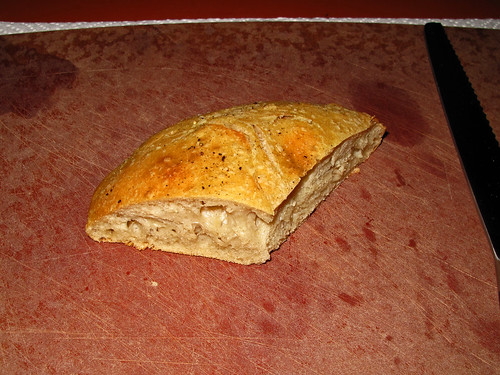Discard braids
It has been too long since I made bread for my neighbors, aka "The Old People", and as I had a large yogurt container of SD discard today was the day. Or rather yesterday evening when I made the dough. I started with a quart of discard and about the same amount of warm water then added old fashioned oats, dried milk, oil, sugar, 1T instant yeast and salt and added KA white whole wheat flour and Wheat Montana ap flour. Like quahtan I lost count of the exact amount - just kept adding until the dough cleaned the sides of the bowl. Oh, I was using my trusty Bosch mixer.
- Log in or register to post comments
- View post
- AnnieT's Blog




